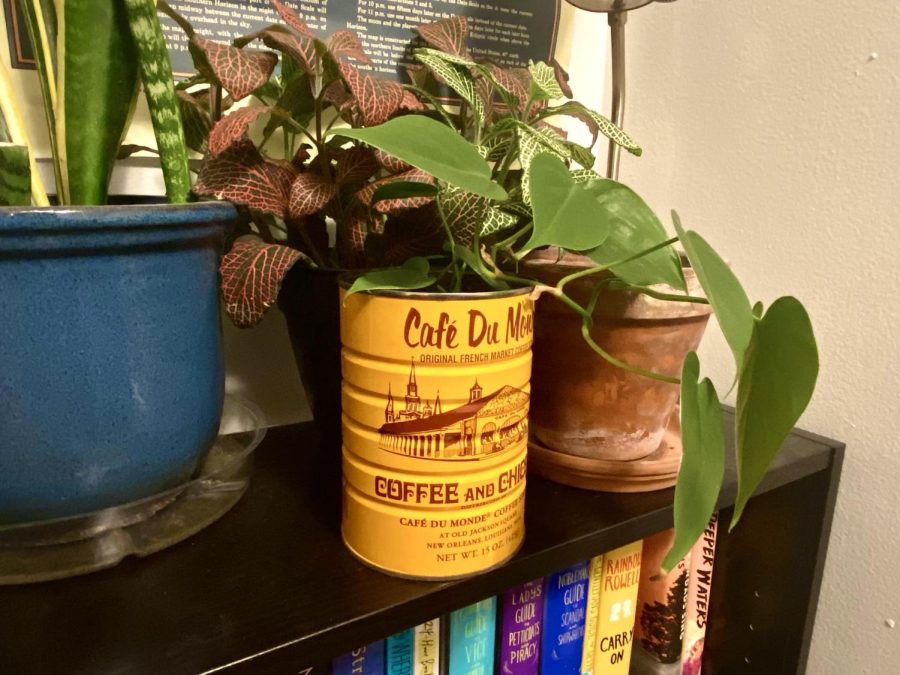As the cold weather approaches and the winter blues set in, plants can be great mood-boosters or vibrant pieces of decor for those who miss the greenery.
For those without a green thumb, keeping plants alive can be a struggle. There’s nothing worse than coming home to a droopy brown pile of leaves in a pot and having no idea how it got that way.
University of Minnesota and community plant experts offered advice that applies to plant owners at any level of expertise.
Picking the plant
Laura Irish, a University propagation lab instructor, recommends beginning by researching what plants would fit best in the space you are buying it for.
“I would definitely try your hardest not to whim-buy plants,” Irish said. “You want to look at the space you’re going to put a plant in, and it is really going to come down to light and temperature and air flow.”
Irish added that students who live in dorms often have lower levels of light coming in and less air flow.
“For those types of situations, I usually recommend starting with a pothos. That’s a really good one for people getting started in owning plants,” Irish said.
Julie Weisenhorn, a University horticulture extension educator, enjoys growing sansevierias, otherwise known as snake plants.
“I think they are really easy plants to grow, and they don’t have a lot of pests,” Weisenhorn said. “They grow in low light, and they come in all sorts of forms and colors now.”
Vaughan Johnson is a third-year University student majoring in landscape architecture with a minor in horticulture.
“Sansevieria, cacti, pothos vines and tradescantia are some basic ones. They require little attention and provide great color and texture to a space,” Johnson said.
Succulents, a prevalent option among students, spurred some disagreement among the experts. Johnson and Irish both warned against them saying most students do not have spaces with enough light for them to grow properly, and people tend to overwater them.
Weisenhorn offered a different take: “Succulents can be a great option for beginners. You barely have to water them, and when you think they need to be watered, you can just feel them, and if they are soft and squishy, they are lacking water.”
Weisenhorn specifically recommended haworthias and Christmas cactuses for beginners looking to own succulents.
Buying the plant
Plants can be found at both big box stores, like Home Depot, or at a variety of local garden centers.
“A lot of the people that own these garden centers are trained horticulturists, and you can ask them for advice. They grow really high-quality plants as well,” Irish said.
You can start the search by looking for plants without a lot of brown and yellow on them.
“When looking for a plant, you want to kind of tip it out of the container a bit to see what the roots look like. You want to make sure it is not super pot-bound,” Weisenhorn said. The term pot-bound describes roots that are tangled and circling around the pot so there’s no more space for them to grow.
Bringing the Plant Home
Weisenhorn warned against immediately putting new plants alongside other plants, in case the plant harbors pests that weren’t noticed at the store.
Experts urge plant-owners to think about light when placing the plant.
“For high-light plants, you don’t want to place them directly in the window, because this can actually burn your plants, but you can place them a few inches away from it,” Irish said.
Irish also noted that during winter, the cold temperatures can transfer easily to the plants if they are touching the windows, potentially harming them.
Caring for the plant
Weisenhorn advises plant-owners to learn where a plant is natively grown.
“People just read the tag, and that’s how they take care of them, and that’s a great place to start, but it is always fun looking into where their plant is a native plant and trying to simulate that environment in your house,” Weisenhorn said.
Overwatering is the leading cause of death in houseplants, according to Weisenhorn.
“Ideally, all your plants should be in a pot with at least one draining hole,” Weisenhorn said.
Watering, lighting, researching, it all can overwhelm a newbie. Irish urges young plant owners to both take risks and take it easy.
“Don’t be afraid to experiment,” Irish said. “Killing plants is okay. We all do it.”

















